Issue & Premise
Housing in Singapore remains largely mono-functional, and offers little to no choice & flexibility. Existing neighborhoods could potentially be readapted for future growth rather than the pragmatic approach of demolition and rebuild through the en-bloc model that Singapore chooses for its redevelopment strategy. This is in fact an unsustainable model and the existing communities within these well-established neighborhoods may be severed, leading to undesirable consequences in social disruption, continuity and cultural values of these estates. Thriving communities can exist in a dense setting with an expanded range of housing options, complementing amenities and offerings of public-social spaces, where they can begin to be stratified across multi-level to achieve a liveable and connected den-city.
The strategy
By tapping on the existing infrastructure, this thesis explores an alternative vision of growing the city overtime through a resource sufficient manner, while improving upon existing amenities and networks, essentially to
curate a space that allows for live, learn, work, play and make to co-exist within the same premise. The novel idea of incremental growth of the city, to anticipate changes that would allow for flexibility and choice for the future proofing of our cities, helped informed the design decision to adopt an exoskeleton structure as will be further explored in the masterplan, building and unit scales. The reimagined housing builds upon the existing, and may entail living in even much higher-density, but consist of high-amenities, high-flexibility and high-quality living in an inspiring environment catered towards the convenience and well-being of the community as the future vision of Singapore’s public housing landscape.
The new housing
The architecture should be viewed as a cyclical, not linear process of change over time. The architect is the choreographer of the skin and bones, while the inhabitants become the actor that drives the ability to make changes overtime. The future of housing should allow for a liveable and adaptable environment, where variating unit options could be offer to different household within the same premise, close proximity to amenities and transport options, sky streets and gardens for a well-connected liveable neighborhood. It is what the re-adaptability of the housing neighborhoods could offer that drives for what may happen in future and allow for provisions to be made for the unforeseen.
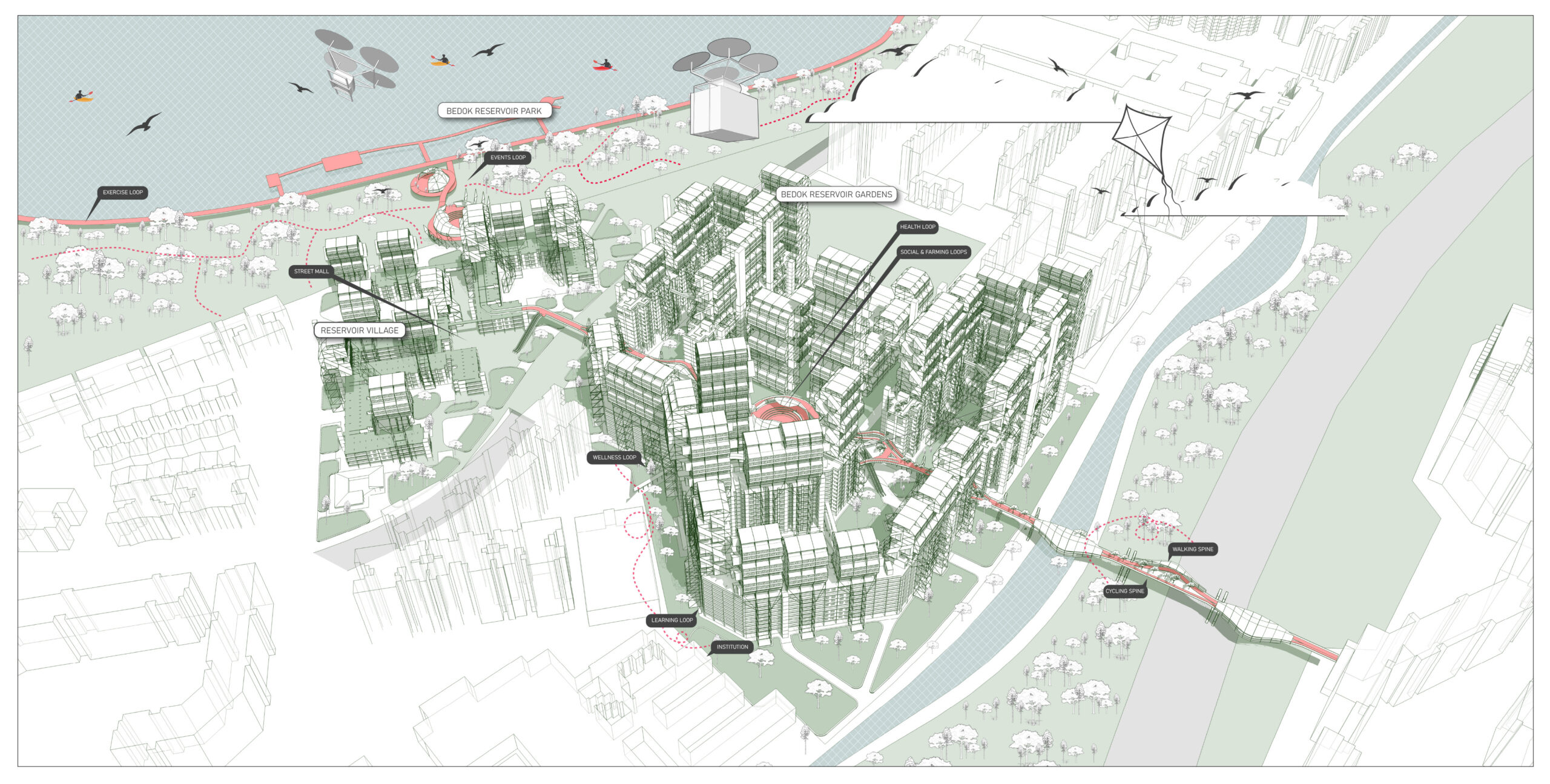
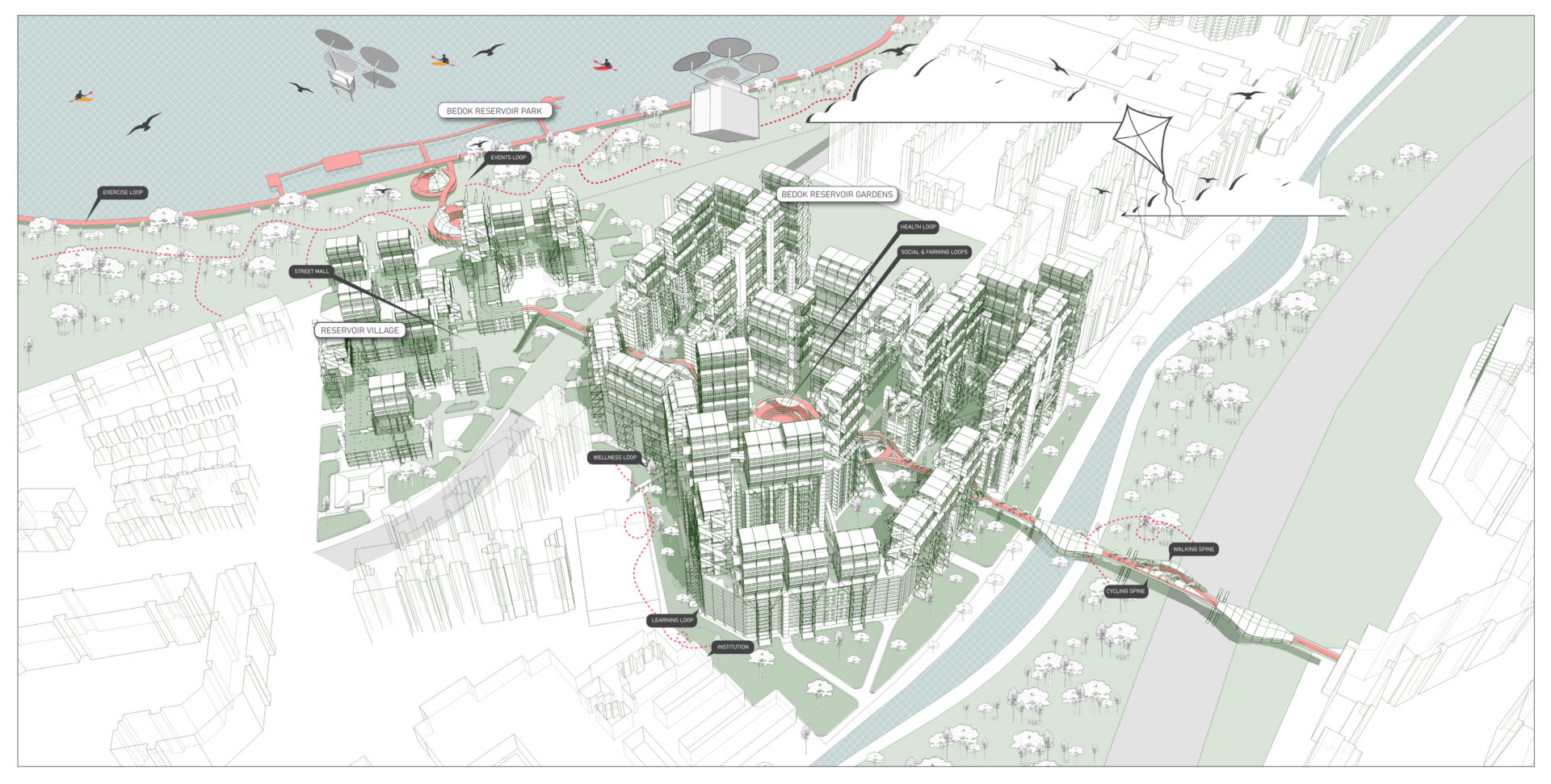


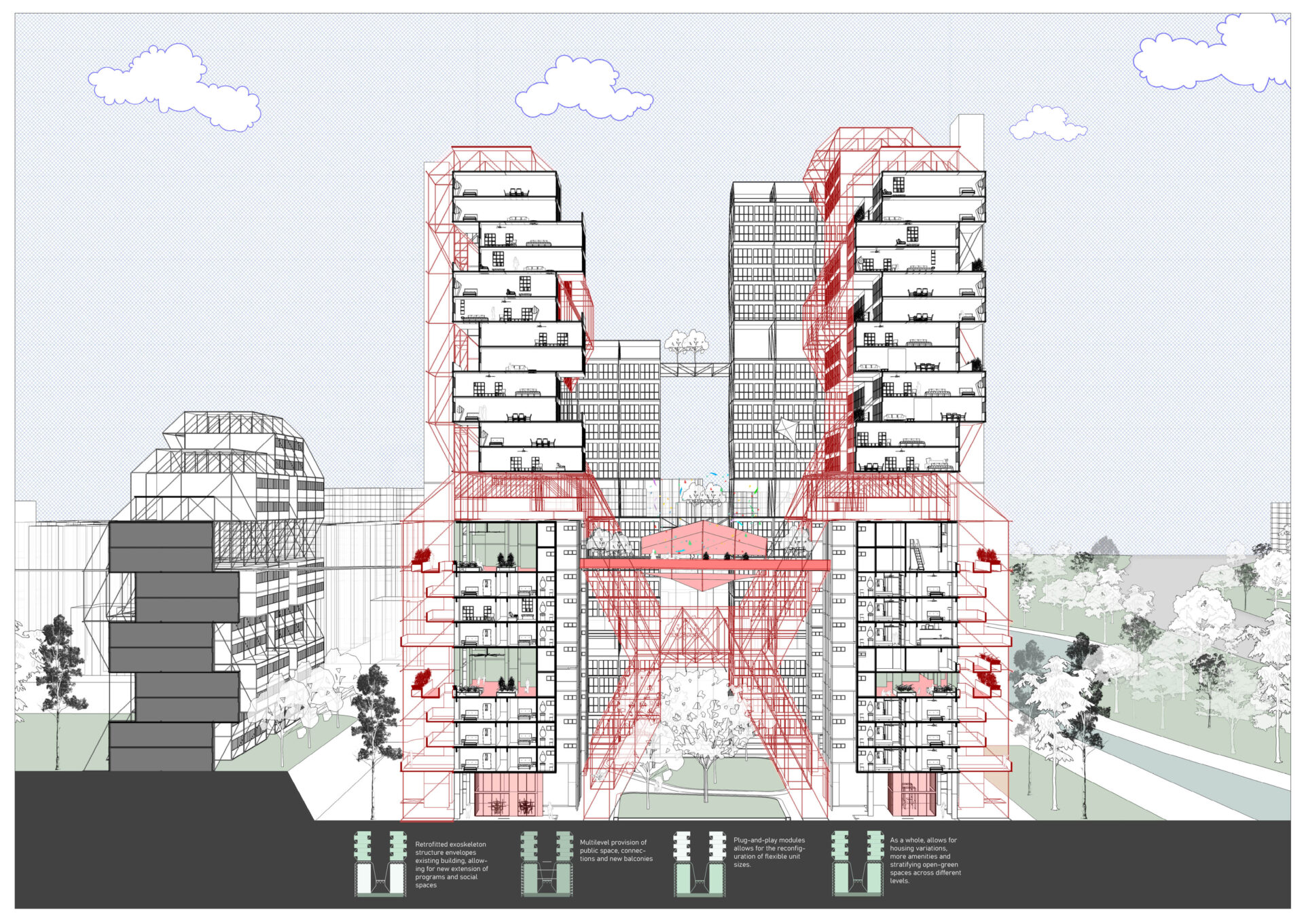
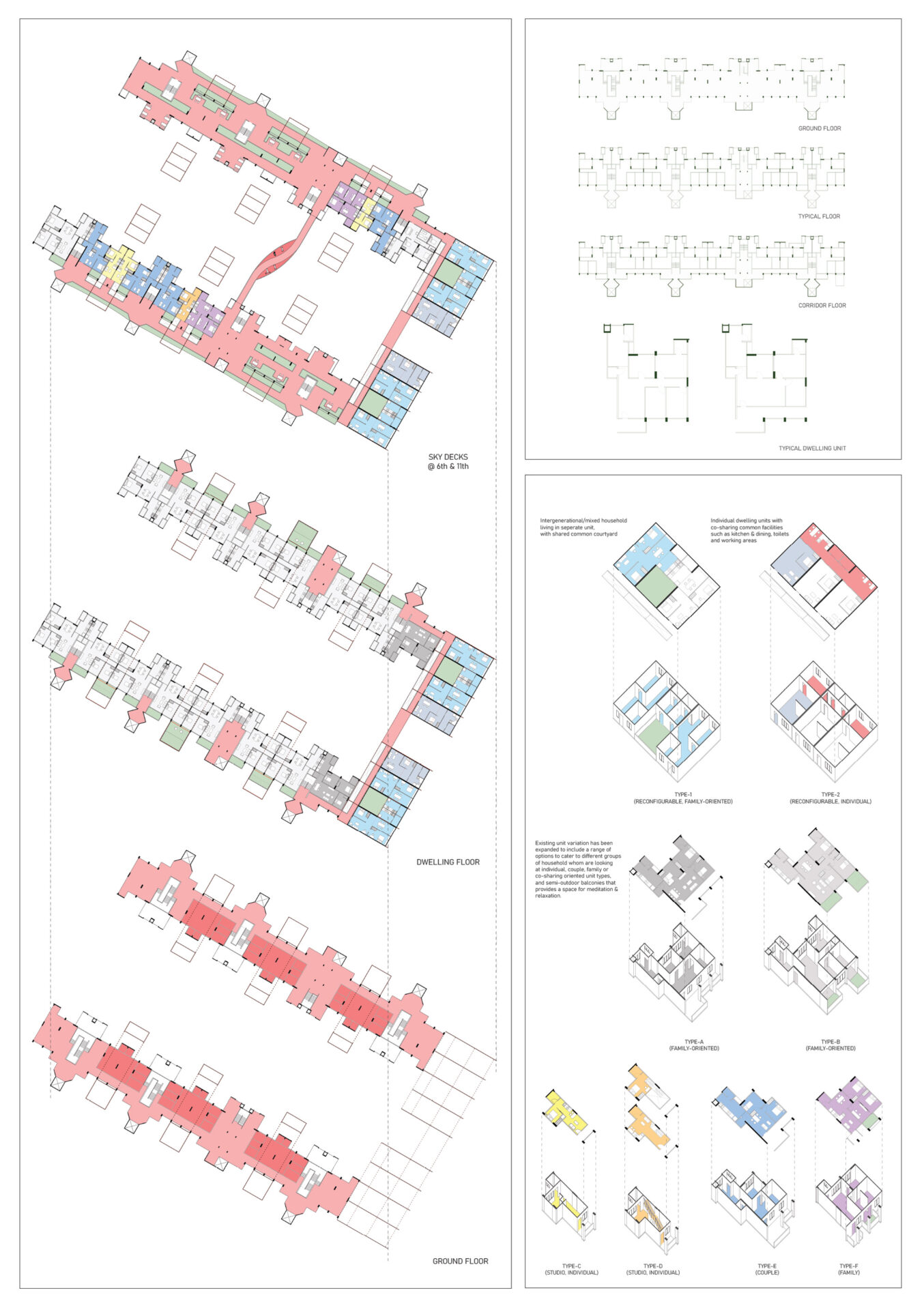
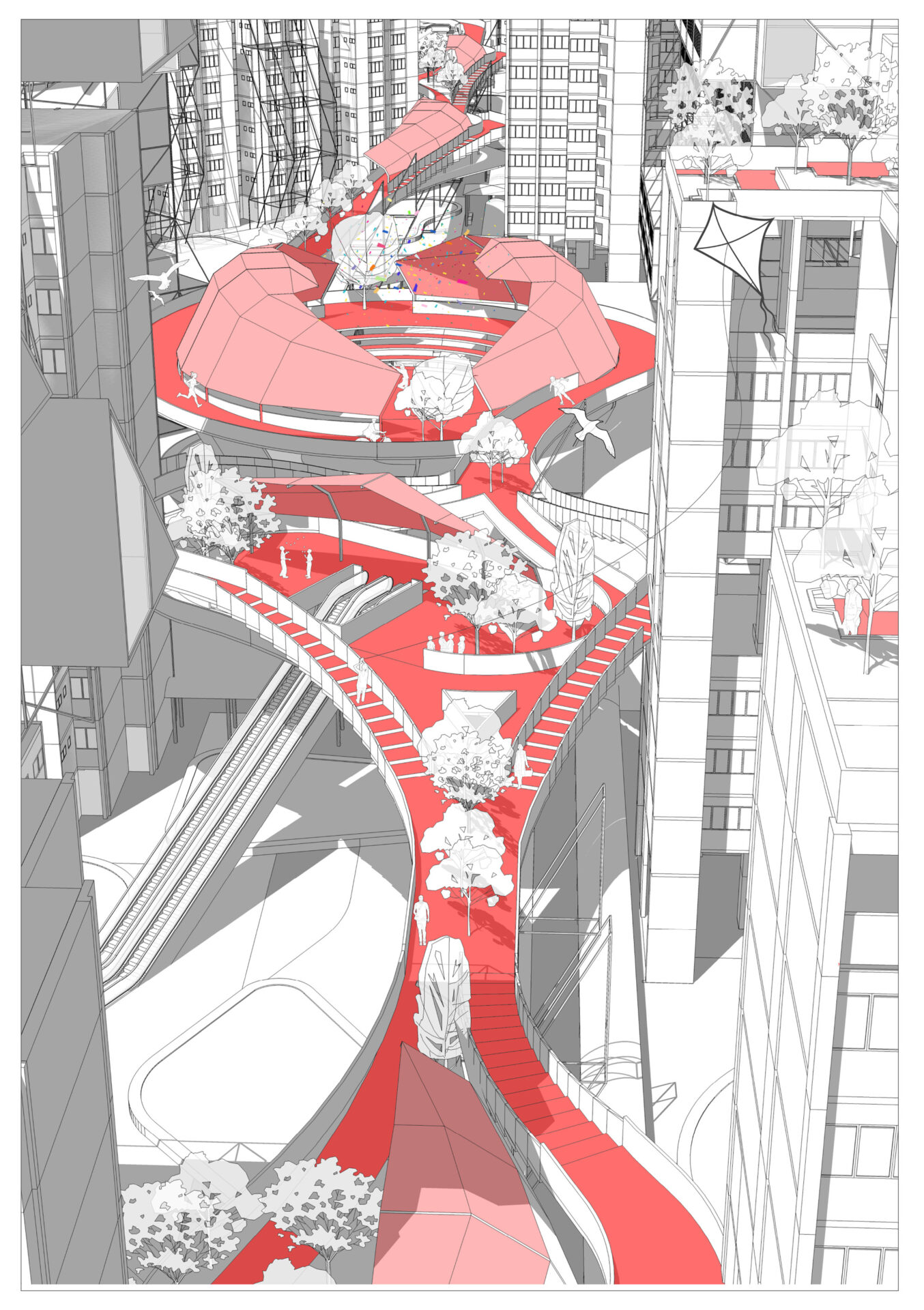
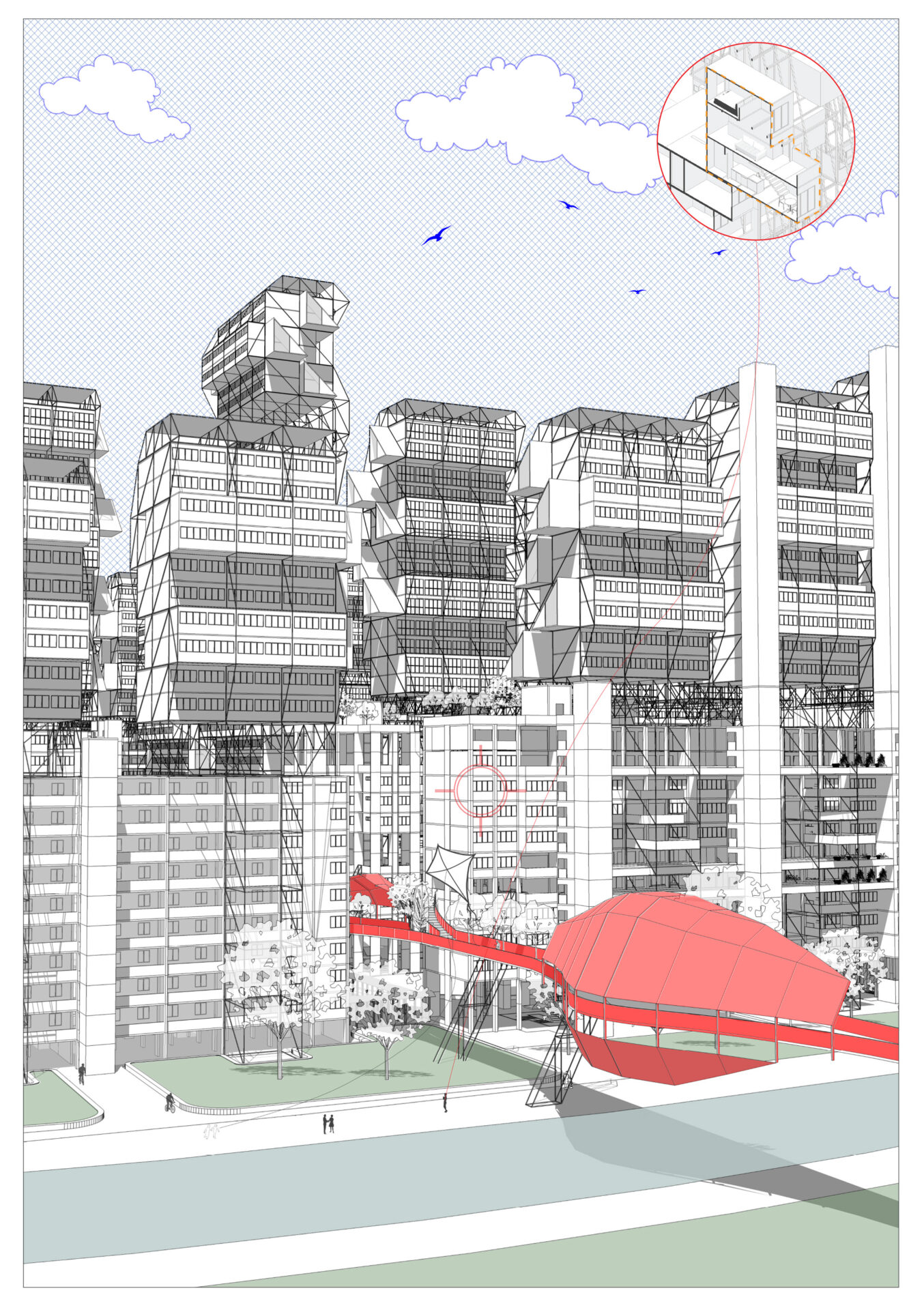
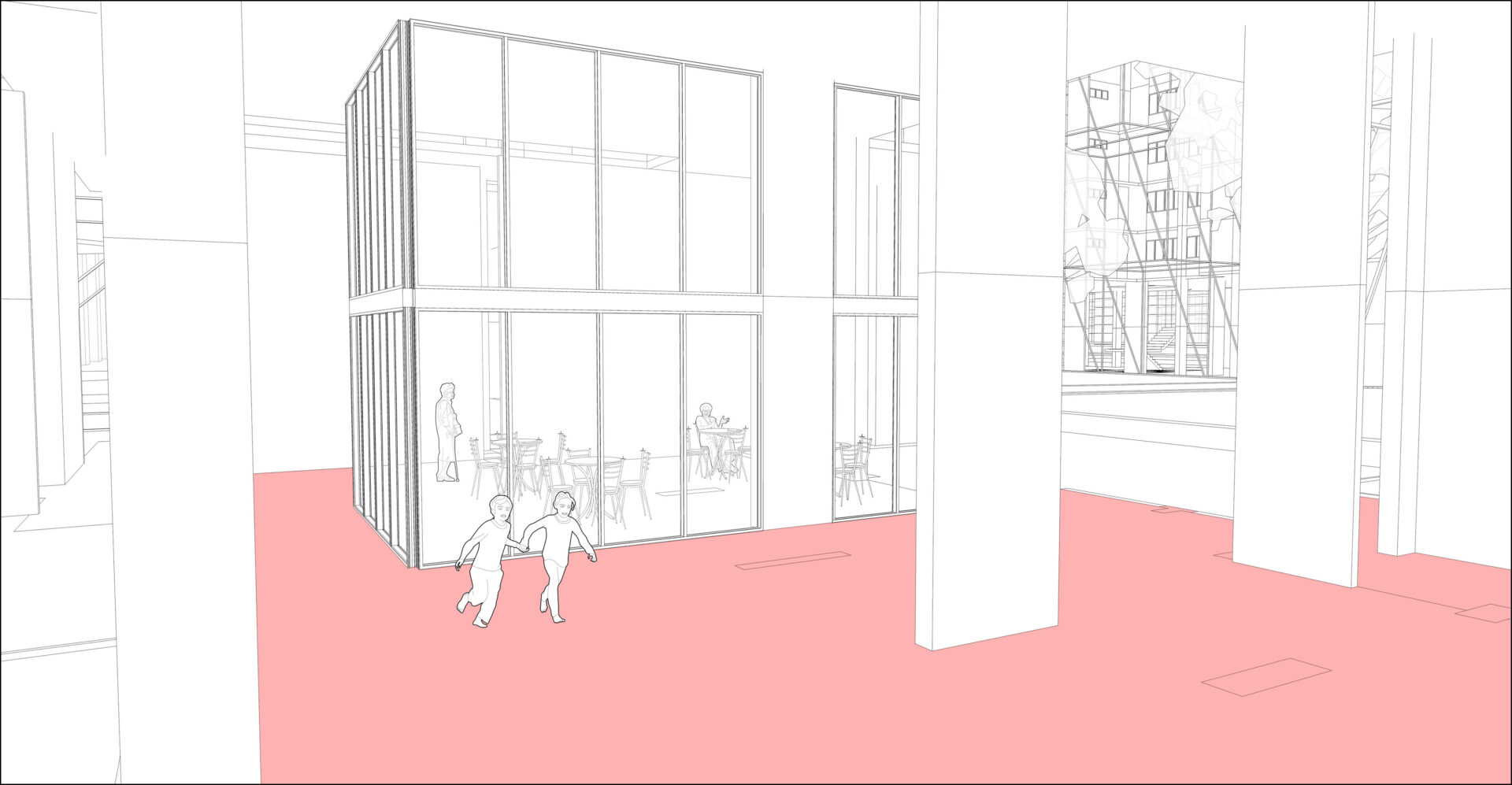
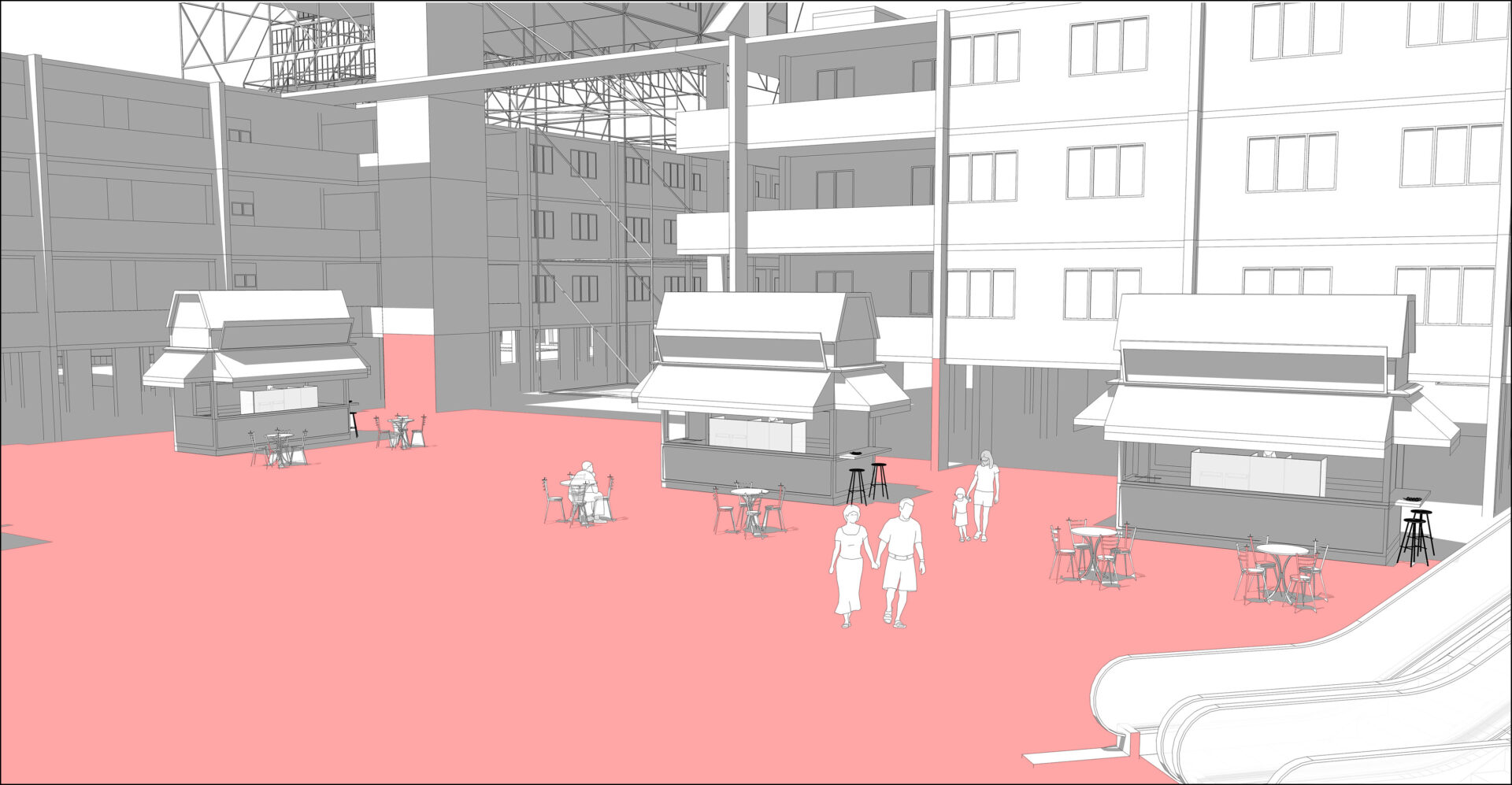
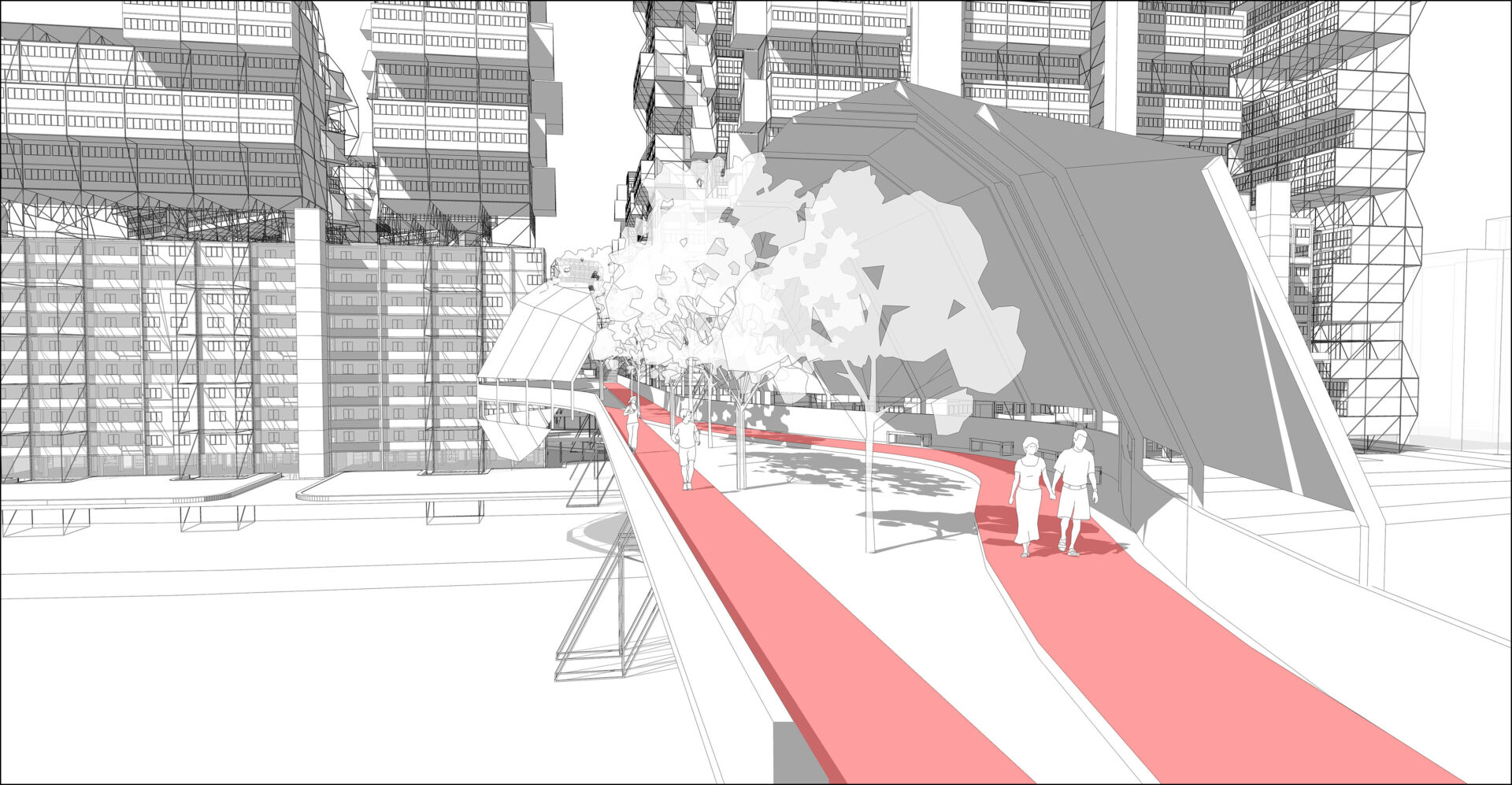
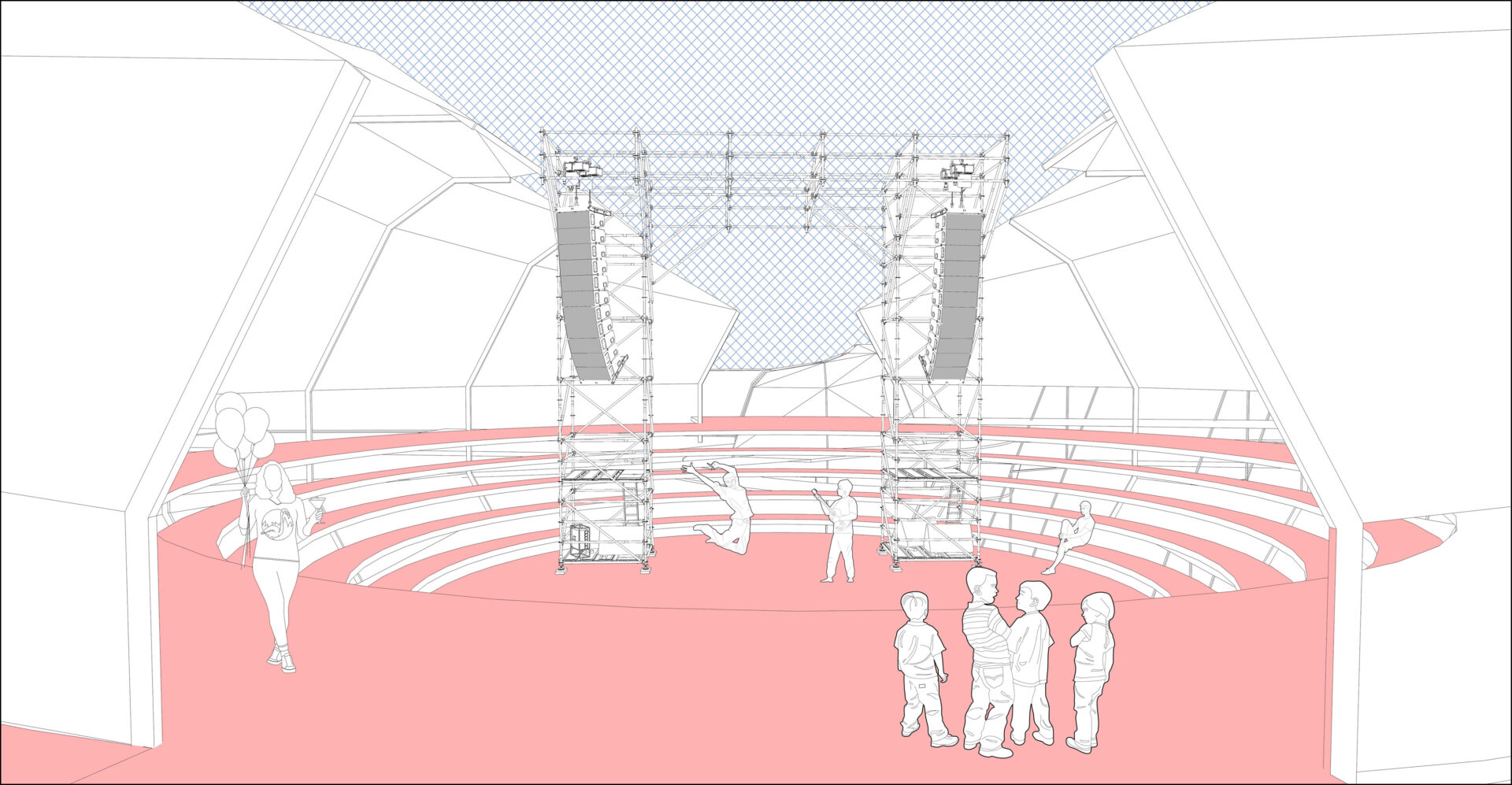
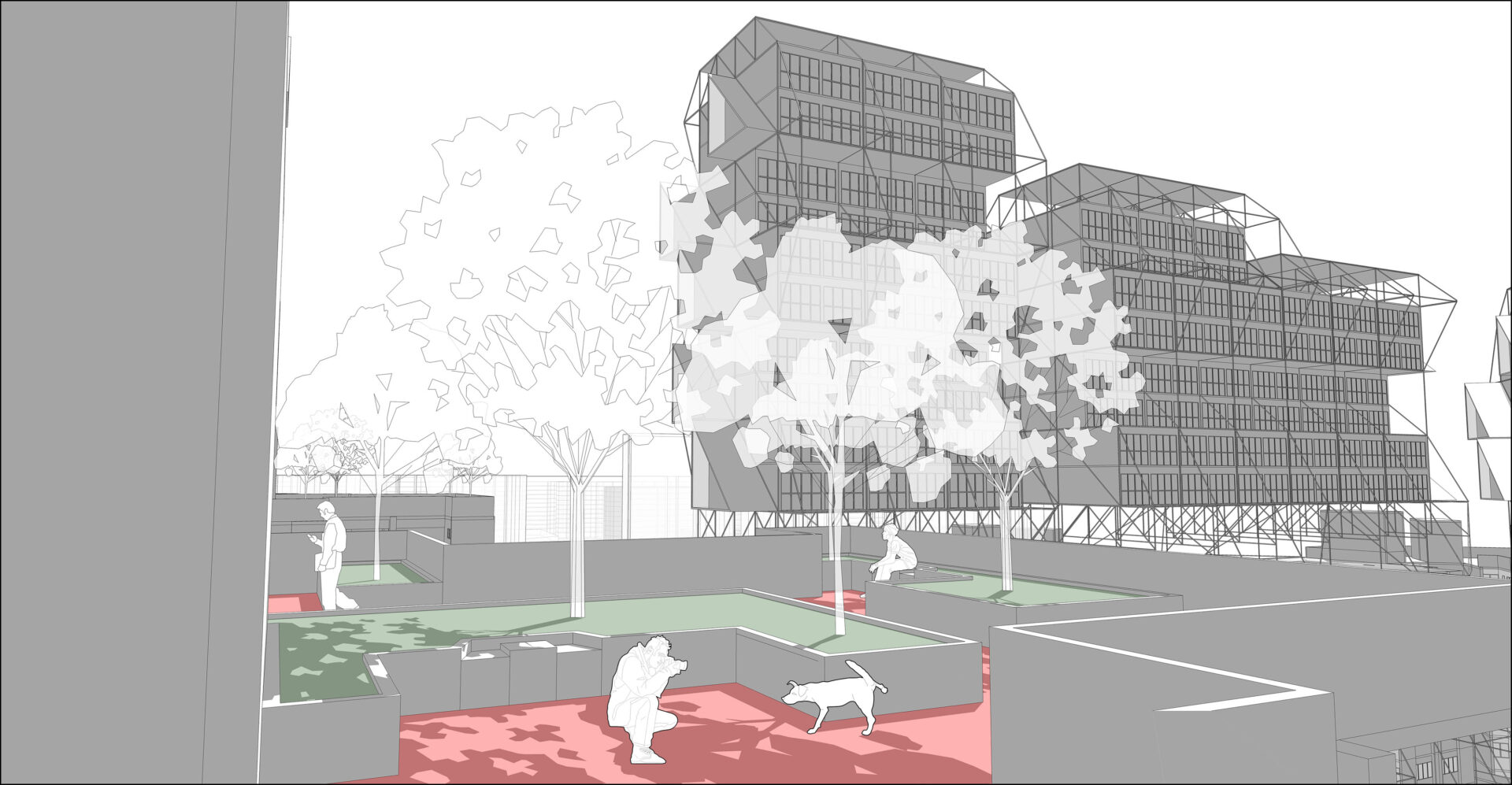
Supervisor's comments:
Critiquing the current public housing of Singapore and the demolition and rebuild – en-bloc model, this thesis seeks to transform existing neighbourhoods into ‘liveable den-city’. Capitalising on the existing infrastructure and landscape of the site that borders the Bedok Reservoir, the project illustrates how housing can be adapted for incremental growth in a resource efficient manner whilst ensuring high quality living through increased amenity, flexibility and choice. From building new and stratified networks that support live, learn, work, play and make at the masterplan scale to the adoption of an exoskeleton structure for the growth and evolution of cluster, building and unit scale design, the project reimagines housing to create empowered and thriving communities.
- Senior Lecturer Swinal Samant Ravindranath (Dr.)